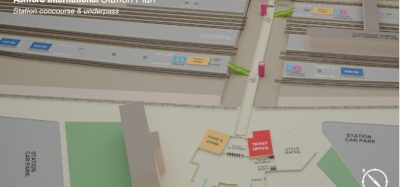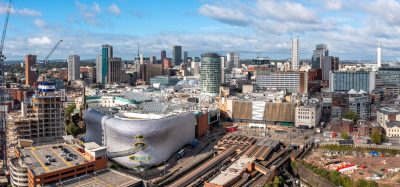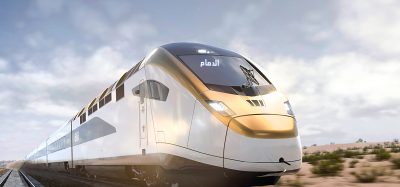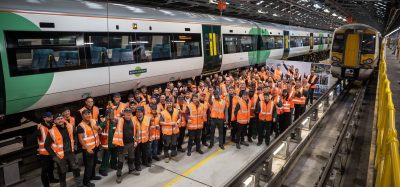High-speed set to gather pace in Poland
Posted: 3 December 2008 | | No comments yet
Although Poland is finding developing high-speed railway lines difficult, the country recognises that by having better transport infrastructure and by having easier ways to move between agglomerations, the quicker its economic development will be.
Although Poland is finding developing high-speed railway lines difficult, the country recognises that by having better transport infrastructure and by having easier ways to move between agglomerations, the quicker its economic development will be.
Poland is playing ‘catch-up’ with other European countries in the field of economic affairs and in satisfying domestic needs. This is why the country is finding developing high-speed railway lines difficult. However, the country recognises that by having better transport infrastructure and by having easier ways to move between agglomerations, the quicker its economic development will be.
Over recent years, high-speed railways have developed not only in technologically advanced countries of Western Europe, for example France, Germany and Spain, but also in developing countries such as Turkey, Morocco, China and Argentina1.
Poland’s Prime Minister, Donald Tusk, established a team which groups representatives from the Ministries of Finance, Economy, Regional Development, Environment, Infrastructure and governors of Poznan, Łódz, Wroclaw and Warsaw, and also presidents of PKP S.A. and PKP PLK S.A. The team has prepared the project entitled “Programme of building and starting carriages on high-speed lines in Poland”, and is also obliged to supervise its implementation.
Connecting cities
The Programme is mainly aimed at creating a transport system connected with the European railway network, which will contribute to a coherent and effective railway system in the EU.
The Programme recommends building a new line in a ‘Y’-shape, which connects the cities of Warsaw, Łódz, Poznan and Wroclaw. Also, other railway lines, for example the Central Railway Line, will be modernised in order to generate profits for the whole country.
The Programme will be implemented at the same time as the modernisation of the conventional railway network. The actions, anticipated in the Programme and Master Plan, will complement one another. The Project will start its first phase in 2011.
Here are the Programmes’ objectives forecasted up to 2020:
- To strengthen the railway transport share in passenger carriages in Poland
- To shorten journey times by a half between big cities in Poland
- To create a new image of the Polish railway as a new mode of transport
- To obtain an unbeatable safety level in transport on high-speed lines
- To limit the transport impact on the environment so that high-speed railway could contribute to a reduction of CO2 emissions
Creating lines to create profits
Taking into account the modernisation of the railway line between Warsaw and Tri-City, which is now under way, and the opportunity for considerably improving the Central Railway Line to high-speed railway parameters, it is difficult but crucial to connect Warsaw, Wroclaw and Poznan with a high-speed line. So, it has been planned that the most effective answer here is to make a joint line for sections between Warsaw and Poznan and between Warsaw and Wroclaw which is to include Łódz and with a branch to the vicinity of Kalisz. Such a shape of the routes will not only connect the cities with high-speed lines, but also bring profits for the regions.
By the definition of high-speed lines, under the act of 28 March 2003 on railway transport, high-speed railway networks in Poland will include new-build lines as well as other lines already modernised, including:
- The section Grodzisk Mazowiecki – Zawiercie (2015) connected with the modernisation of Łódz – Widzew – Opoczno Płd on the Central Railway Line
- The section of Psary – Krakow (2012)
- The section of Poznan – Szczecin (2014)
- The section of Warsaw – Białystok (2014)
The interoperability of high-speed railway trains with conventional railway networks assures that the project will also bring profits for other cities in Poland. The section between Poznan and Rzepin will be modernised to allow speeds of 200km/h. This will help link Berlin to the Polish high-speed service area. This will connect high-speed lines in Poland to the West European network. If high-speed lines in neighbouring countries develop well, the Programme will enable better railway connections with Prague through Wroclaw.
The Warsaw to Poznan connection is also included in line between Berlin and Moscow. Modernisation projects of conventional railway networks, adjusting the lines to high-speed standards, are regulated in other strategic documents, and are not implemented in a way that new high-speed lines should be. The Master Plan for Railway Transport till 2030 equally treats construction of new lines as well as the modernisation of the existing conventional network, stressing the need to get on with both areas.
It is important to implement the projects, and especially to build high-speed railways in parts, which should be reasonably completed at the same time as the modernisation of the existing conventional line between Warsaw and Łódz. These two projects are not mutually exclusive, but they do complement each other. The high-speed railway programme is very important for Łódz. A railway tunnel under the city centre is expected to be built and as a result, railway problems will be solved there, especially because of its location out of the main railway routes, and unfortunate historical remnant – two railway stations making it impossible to organise an efficient railway system in the region.
For preparatory and investment works on infrastructure, the project is expected to cost 22 billion PLN during 2008 and 2020. The expected rolling stock purchase will cost 3.2 billion PLN. The demand amount was estimated by means of the forecasts from the “Preliminary feasibility study of high-speed railway construction on lines Wroclaw/Poznan – Łódz – Warsaw” (2005), and the “Master Plan for Railway Transport in Poland till 2030”. However the forecasts do not take into account demand flexibility, which considerably depends on journey times and ticket prices. Given the high-speed railway programme, it is also important to cooperate with scientific and research railway circles while carrying out adjustment research on infrastructure parts and infrastructure operation observed at selected test places.
The high-speed line project expenditures are taken into consideration in the “Master Plan for railway transport in Poland till 2030”. The high-speed lines project will get support from EU funds (mainly from TEN-T development) and private partners and institutions.
It is planned to start passenger carriages on high-speed lines between 2019 and 2020. Here is the following programme framework:
- Preparatory works will begin in the second half of 2008
- Building works will be implemented during 2014 and 2019
- Tests will be carried out during 2018 and 2020
It is necessary to determine optimal construction stages and operation starting time, which will be synchronised on other railway lines. This will bring more visible results in shorter periods of time. High-speed lines will work in Poland if the following is also executed:
- Construction of accompanying infrastructure
- Modernisation of lines which are a direct extension of the “Y” line
- Connection of a high-speed line with the central airport
- Creation of a road system with access to passenger service stations on the “Y” line
- Training of staff for projecting, building and operation of the high-speed line
To start high-speed line carriages, an action plan is required which will ensure:
- Comprehensiveness
- Practicality
- Consensus between different parties interested in main issues
- Conformity with EU and Polish regulations
The last lines to have been built in Poland were the Central Railway Line and the Broad Gauge Metallurgy Line in the 70s. As a result, the Polish experience is too obsolete to build new railway lines within the Programme. The analysis and research connected with the Programme shows that this will be difficult because of its innovative technological character as well as its financial and material scope. Hence, it is crucial to determine how to implement it in a legal and organisational way. It has been proved that it is necessary to purposely appoint a company to carry out preparations for construction and operation of high-speed railways if the schedule for the Programme is to be met on time. It is assumed that the company will be established by the Government and it will be the Minister of Transport who will supervise its activities.
Social consultations on the Programme for High-Speed Lines began on 11 August 2008. When it ends, the Programme will be affected by comments and remarks sent by organisations and institutions. When the Government approves the Programme, the tender for an executer of the Feasibility Study will be launched.
Passenger carriages on high-speed lines in Poland will allow to:
- Increase transport access to many regions in the country, also to East Poland and to strengthen interregional connections not only with reference to Warsaw
- Raise the level of social, economic and spatial cohesion in the country
- More efficiently cooperate between the regions in Poland and Europe in the field of economy, science and culture
- Change the Polish railway transport image and improve quality and access to public transport services
- Improve the safety level by promoting carriages on high-speed lines, which have unbeatable safety level, and also by reducing car carriages
- Foster technological railway transport development and cooperate with producers and research institutions
- Limit negative passenger transport impact on the environment
Reference
- Energy and Transport Figures 2006
Global Railway Review Autumn/ Winter Issue 2025
Welcome to 2025’s Autumn/ Winter issue of Global Railway Review!
The dynamism of our sector has never been more apparent, driven by technological leaps, evolving societal demands, and an urgent global imperative for sustainable solutions.
>>> Read the issue in full now! <<<







